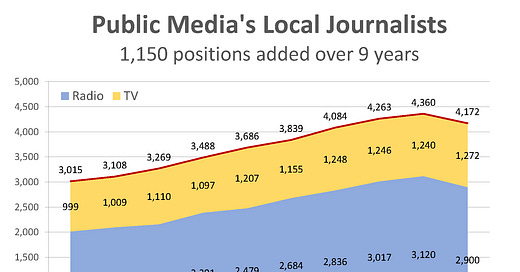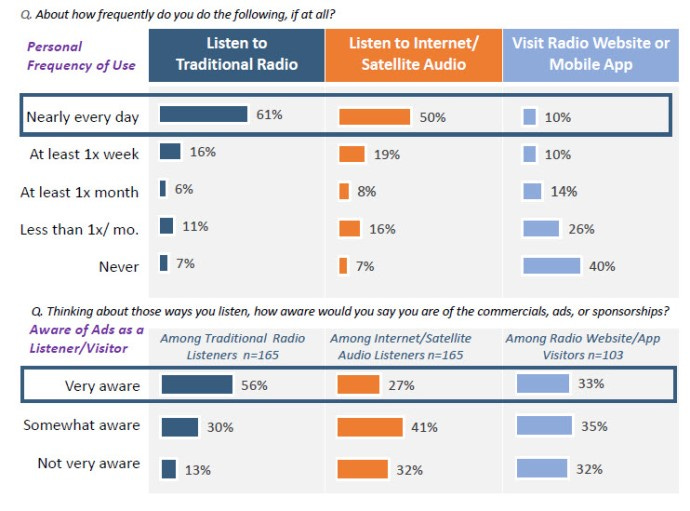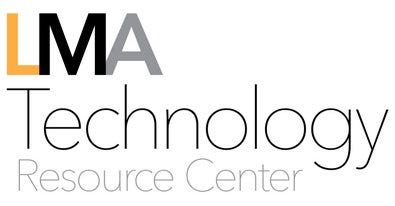Three Things for December 2, 2021
This week: Is the hope for a digital NPR - Member Station network crumbling? Plus, the digital audio hesitation and the launch of a technology resource center for media organizations.
THING ONE: Is the Network Crumbling?
Tuesday’s news that Vox is working in partnership with WNYC to bring its daily news podcast, Today, Explained to public radio audiences was the latest in a series of wake-up calls of concern regarding the state of the NPR - Member Station “network”, particularly when it pertains to digital platforms.
Before we review some of the other recent events, let’s first look at the current NPR Strategic Plan.
One of the four pillars supporting the company’s strategic priorities is to Realize The Power Of Local/National Network For An On-Demand Future as detailed in the plan’s narrative below.
We must strengthen the work of the Station Compact and build NPR and the network of Member stations into one impactful, powerful and united media enterprise. We have the unique power of local, regional, and national news reporting and storytelling and must align around a shared strategy for its distribution. Now is the time to fully realize and use that strength to beat our competitors.
The plan was adopted earlier this year and is designed to take the company through 2023. Since adopting the plan, a few things have happened in the competitive space worth noting:
June 10, 2021: American Public Media announces a multi-year strategic partnership with Cadence13, a subsidiary of Audacy (formerly Entercom). Through this deal, Cadence13 will serve as the exclusive podcast sales representative for APM. Additionally, the organizations will develop future on-demand programming initiatives, co-productions, and collaborative new revenue opportunities.
October 12, 2021: The New York Times announces it is building a standalone app that will feature audio stories from the Times and others to create a new destination for listeners. This American Life will be included on the app with podcasts like Serial and audio content from other major publishers. The Times already has a presence on more than 250 public radio stations, with weekday broadcasts of The Daily podcast heard by nearly 2 million radio listeners each week1. Earlier this fall, The Times recruited Lulu Garcia-Navarro away from NPR to anchor a new Opinion podcast.
November 9, 2021: New Hampshire Public Radio signs an exclusive national marketing agreement to distribute its podcasts2 via Stitcher. In the announcement marking the deal, NHPR President/CEO Jim Schachter said, “NHPR’s thoughtful, well-researched approach to journalism and storytelling has made it a top-ranking U.S. podcast producer, as measured by audience size and downloads. This agreement now provides our best opportunity yet for greater monetization through underwriting sales that will allow us to continue investing in our podcasts.”
November 30, 2021: As part of the Vox | WNYC announcement was the news of the departure of Noel King as one of the hosts of NPR’s Morning Edition to become the co-host and editorial director of Today, Explained with Vox early next year.
These events demonstrate the disruption and angst that’s happening across public radio regarding on-demand audio. During last month’s NPR Board of Directors meeting, this anxiety was on display when Paul Maassen, General Manager of WWNO and WRKF, expressed concerns about the importance of NPR and member stations coordinating strategies around podcasting.
Current’s Tyler Falk provided a complete summary of the exchange between Paul and NPR CEO John Lansing at the full board meeting on November 19. Maassen made similar comments to the Membership Committee of the NPR Board on November 9. Some Member Directors on the committee expressed appreciation for his comments in the chat section of the Zoom virtual meeting.
The comments by John Lansing to the concerns, as reported by Current, said that next year NPR will prioritize unifying “as best as we can the system around podcasting, to every point you made, to create scalable leverage for marketing podcasts both local and national, and also to take a look at how we can create through the NPR network another way for people to contribute money to the system that can flow back to stations in terms of membership revenue. So that’s the number one thing we’re working on right now.”
But, for most member stations, is that enough?
By jumping back to the current NPR Strategic Plan, below are KPIs established to measure the success of each of the plan’s strategic priorities, including the focus on the Local/National network.
To add to the question I just wrote, are these success measurements really what member stations are looking for through the local-national collaboration?
While every station will certainly welcome any new donors they can get through NPR’s digital platforms, I personally don’t think this is enough, and here’s why:
Stations recognize that audiences are migrating to digital platforms at the same time that there is an increasing number of options for national news via podcasts and on-demand. They understand that NPR needs to continue to be in the space, but, and this is the thing, they believe that the competitive advantage for NPR and stations is a shared vision for how to serve digital audiences with a strong national and local service. This means exploring how stations and NPR can collaborate to co-create content across digital platforms while developing the revenue models to sustain this effort.
While there is a brief reference to this3 in the strategic plan, stations are not seeing the urgency to help counter the speed and agility that competitors are making in this space, whether it is with on-demand audio or other platforms such as newsletters, which have taken on new life over the past two years.
And in many markets, new local competitors are also popping up. In one year, Axios Local has grown from one market to 14, with another 11 planned for the coming months. In a recent story in Adweek, Axios chief financial officer Fabricio Drummond made it clear that they are looking to aggressively grow its presence in local markets.
“We’ve mapped out 100 markets in cities where we think this product can have a meaningful impact for local readers,” Drummond told Adweek. “But 100 is the minimum. We also want to have alternative paths that enable us to expand into even smaller communities.”
The Axios Local model is a clearly defined network approach that focuses on putting journalists into local communities (usually only a couple of people in each location at this point in time) while centralizing the technology and business operations. In less than a year, the results are that its 50-person team has more than 500,000 subscribers for its daily newsletter with an open rate of between 30% and 55%. They are also developing a member subscription program to grow additional revenue beyond advertising.
This is the kind of approach we need to compete locally and nationally. The migration of most stations, and ultimately NPR, to the Grove CMS is one step forward. But we’re still genuinely lacking the bold, collaborative vision to create the culture and financial model for a journalism network that serves audiences seeking local and national news with audio, visuals, and text.
This slide from the Station Resource Group from this fall with data from CPB indicates that the numbers are there to have the scale to compete for news audiences who listen and read. But we need to believe, think, and act as a network rather than just talk about it.
If we’re splintered in our approach, either by a lack of trust inside the system or by financial opportunities outside of public media, then our future is truly at risk.
What do you think are the collaborative steps we need to take right now to effectively position stations for the digital future? This is a theme that I hope to continue discussing in the weeks ahead, so please let me know your thoughts.
THING TWO: The Digital Audio Hesitation
Borrell Associates surveyed 178 local businesses this fall as part of its ongoing research on local advertising. They found some fascinating results suggesting a significant untapped opportunity for local media (i.e., radio) to grow revenue with their digital audio products.
The first takeaway from the study found that the panel surveyed are heavy consumers of both traditional radio and streaming audio.
However, those same individuals, when asked what type of audio advertising their business had purchased in the last year, the numbers shrink considerably.
38% said that they had purchased local radio spots
15% bought ads in streaming audio (this would include station streams and pure plays)
Only 3% bought podcast advertising
One of the reasons for this disparity is that, generally, local advertisers had a low understanding of how to purchase advertising in podcasts and streaming4.
The study found that digital audio offers local businesses more targeting, accurate reporting, and control over content than radio. But, when the question is asked which is easier to buy, the local businesses surveyed responded that traditional radio was more than four times easier to buy than digital audio.
Given those responses, the panel split three ways when asked why they hadn’t bought digital audio:
They don’t know enough about it (even though many consume it regularly)
They think it is too expensive.
They said that “no one has pitched me.”
Borrell’s VP of Research, Corey Elliott, has a great short video that is worth sharing with your sales team. It just might get their juices going to get out and more effectively sell your digital products.
THING THREE: The LMA Technology Resource Center
There are times when you run across something and a light bulb goes off saying “that’s a really good idea.”
I had that experience two weeks ago when I stumbled across this announcement from the Local Media Association that it’s establishing a Technology Resource Center for the media industry. The effort, which is expected to launch early next year, is being developed with support from the Google News Initiative.
Why is this a good idea?
For me at least, there are many small and medium-size organizations in public media that really struggle when it comes to assessing and implementing strategies around optimizing and enabling technologies that help our organizations run effectively and more efficiently.
Many University-licensed stations rely on the expertise on their campus while smaller community-licensed organizations may have very limited in-house staff expertise when it comes to achieving the best possible outcomes from their technology investments.
One of the things I like about this initiative is that specifically focuses on the media industry5.
According to the launch announcement about the LMA Technology Resource Center, it will be built to help media organizations in several ways, including:
Routine discussions with technology and business leaders at local media organizations of all sizes and types, at corporate and property levels, to develop an understanding of technology needs and challenges and find common ground where possible.
Developing and sharing a deep understanding of leading platforms, service providers, and enabling technologies for local media; including content, distribution, advertising, consumer revenue, customer relationship management, and general business platforms.
Building and consulting with cohorts of local media organizations, and helping to improve their strategic processes for selecting, implementing, and operating key technologies.
Producing industry reports on technology best practices and new ideas, as well as conference programming on technology strategies for LMA events.
Jay Small, the Local Media Association’s COO said in the announcement, “The Center will be there to help local media leaders learn how to decide for themselves what they need most, organize those needs, find solutions that meet them, and get up and running effectively.”
The LMA is now recruiting for a Managing Director to build and lead the Center working with other LMA staff, independent consultants, industry R&D partners, and technology service providers.
We have various resources available to public radio stations including the Association of Public Radio Engineers along with the technology expertise that comes with your NPR membership and via the PRSS.
However, this two-year pilot project will be an interesting experiment for media outlets, which could include public media organizations, in helping them with their growth strategies supported by technology through a collaborative industry-wide approach.
That’s this week’s Three Things.
Thanks for reading and I hope that your Giving Tuesday fundraising was successful this year.
Please feel free to share this newsletter and encourage your colleagues to signup.
Source: American Public Media
NHPR produces such podcasts as Bear Brook, Civics 101, Outside/In, and Document.
“We have the unique power of local, regional, and national news reporting and storytelling and must align around a shared strategy for its distribution.”
51% of those local businesses surveyed had a low understanding of buying podcast advertising, with 37% lacking familiarity with buying streaming audio ads. Meanwhile, 75% of those surveyed had a very high awareness of buying local radio spots.
Newspapers, broadcasters, and digital news organizations of all sizes are included within the scope of the Local Media Association. Local broadcast entities, including public media organizations, can join the LMA. Annual dues are $995 for all outlets in a single DMA.







Changing how they manage their Facebook page would be a good start. I suspect NPR has more Facebook fans in Massachusetts than WBUR and GBH combined. That's a problem.
Tim, you should consider what state networks are or are not doing to secure our importance to news audiences in the future. I'm in Michigan and we have taken some small steps in recent years but mostly our statewide network does what it was doing 25 years ago. There is a fair amount of talk about collaboration here among a variety of news entities but, in my experience, the funders determine the outcomes and seem most interested in mixing various types news organizations together. Our public media network has yet to make a serious effort to get philanthropic support behind our collective news efforts. We hear of exciting work being done in states like Indiana, Texas and Alaska, and I am always interested to hear more about those efforts.
Thanks for your great service to our industry with this newsletter.